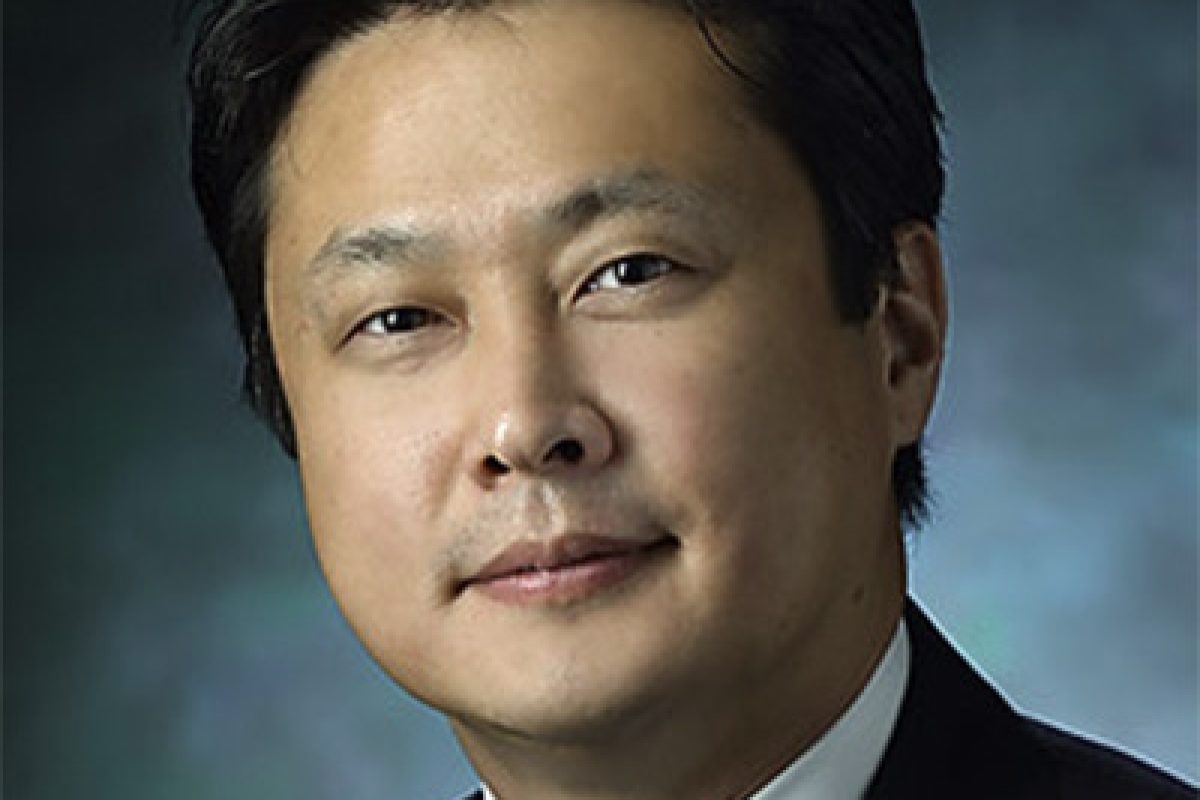The Mumm lab’s research is focused on investigating the development, function, and regeneration of neurons and neural circuits. Their long-term goal is to apply what they learn from a naturally regenerative species, the zebrafish, toward the development of novel therapies for restoring neural function to patients. They place an emphasis on unique perspectives zebrafish afford to the study of biology, such as in vivo time-lapse imaging of cellular behaviors and cell-cell interactions, and high-throughput chemical and genetic screening. They have pioneered several technologies to support this work including multicolor imaging of neural circuit formation, a selective cell ablation methodology, and a quantitative high-throughput phenotypic screening platform. Together, these approaches are providing novel insights into how the degeneration and regeneration of discrete neural cell types is controlled.
Deok-Ho Kim
My research focuses on the development and application of engineered biomaterials and human stem cell/tissue engineering technologies, including microfabricated tissues such as organ chips, organoids, and bio-printed tissues, for disease modeling, drug development, and precision medicine. By integrating AI and digital organ twin models with experimental human mini-organ twin models, we aim to develop more predictive human preclinical models for drug discovery and precision medicine. Additionally, my work integrates state-of-the-art multi-scale biomanufacturing techniques with advanced 3D tissue-engineered models of human disease, incorporating biosensors and AI/ML-enabled biosystems for clinically relevant functional analyses. The ultimate goal of my research is to better understand complex human disease biology in response to microenvironmental cues in normal, aging, and disease states, gaining new mechanistic insights into the control of cell-tissue structure and function, and developing multi-scale regenerative technologies for improving human health. I believe these efforts directly support TTEC’s mission to advance transformative technologies in the area of translational tissue engineering.”
Arvind Pathak
Dr. Pathak directs the Laboratory for Image-based Systems Biology, which works at the interface of engineering, medicine, and design to develop new hardware, software and “wetware” tools for basic and translational applications in tissue engineering and cancer. For the past several years he has collaborated with Dr. Grayson to spearhead the new field of “image-informed biomanufacturing” for tissue engineering applications. These efforts have included the development of novel in vivo and ex vivo imaging tools to acquire data to “inform” the design and deployment of more efficacious biomaterials for eventual clinical translation. More recently, he is collaborating with Dr. Grayson and other investigators to harness imaging and sensing technologies in health and disease models for applications in the Digital Twin (DT) and Precision Medicine (PM) space. Dr. Pathak has a long track record of leveraging in vitro, ex vivo, and in vivo imaging techniques for clinical biomarker development for cancer and other diseases. This includes multiscale imaging technologies and time-resolved characterization of disease evolution in vivo, all of which are critical for establishing the feasibility of DTs in the preclinical space. Dr. Pathak and his team are also leveraging cutting-edge miniaturized microscopy methods to characterize neurovascular changes longitudinally in preclinical models of brain aging. These approaches represent the first time that changes in multiple physiological variables can be measured continuously in vivo, over the lifetime of the aging model. These nascent studies have the potential to revolutionize our understanding of aging and its effects on the brain and other tissues. Finally, Dr. Pathak and his team are leveraging imaging-based artificial intelligence (AI) approaches to generate predictive models of engraftment success and biomaterial efficacy in vivo. Collectively, the imaging and computational tools that Dr. Pathak and his team are developing are synergistic with all the “Pillars” and “Horizontals” proposed in TTEC’s strategic plan for “Adaptive Therapeutics”, which make him an excellent fit as an affiliate faculty member of our Center.
Amer Riazuddin
I received PhD from the Department of Biochemistry and Molecular Biology, Johns Hopkins University School of Public Health (2002). Afterward, I completed two postdoctoral fellowships: first, at the National Eye Institute, National Institutes of Health, and second, at the McKusick-Nathans Institute of Genetic Medicine, here at Hopkins. Trained as an ocular geneticist, I have been involved in identifying the genetic basis of multiple inherited ocular diseases and understanding the underlying pathomechanism over the past two decades. In recent years, I have expanded the scope of my research to pluripotent stem cell-based regenerative medicine. Currently, my laboratory is validating stem cell-derived corneal endothelial cells as an alternative to donor tissue for the treatment of corneal endothelial dysfunction. Additionally, my laboratory is working on two research initiatives. First, the development of a non-surgical treatment of cataracts by perturbing lens cell pathways, and second, stem cell-based regeneration of the glaucomatous tissue as a possible treatment of glaucoma.
Gabsang Lee
Our group has been focusing on how we can utilize human induced pluripotent stem cells (iPSCs) to model neural and muscle diseases in a hope to develop new therapeutic strategies. My lab is one of the first teams who utilized human iPSCs for disease modelling and drug discovery/validation, and recently we developed new human iPSC-based cell therapies for degenerative diseases and aging.





